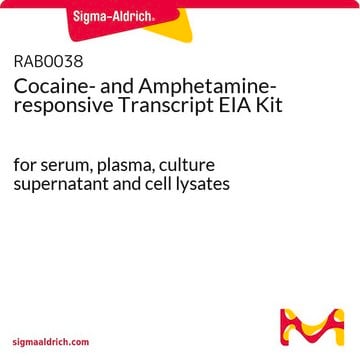A1263
DL-Amphetamine sulfate salt
Synonim(y):
(±)-α-Methylphenethylamine sulfate salt
About This Item
Polecane produkty
Postać
powder
Poziom jakości
kontrola substancji
USDEA Schedule II; Home Office Schedule 2; stupéfiant (France); kontrollierte Droge in Deutschland; regulated under CDSA - not available from Sigma-Aldrich Canada
Zastosowanie
forensics and toxicology
ciąg SMILES
OS(O)(=O)=O.CC(N)Cc1ccccc1.CC(N)Cc2ccccc2
InChI
1S/2C9H13N.H2O4S/c2*1-8(10)7-9-5-3-2-4-6-9;1-5(2,3)4/h2*2-6,8H,7,10H2,1H3;(H2,1,2,3,4)
Klucz InChI
PYHRZPFZZDCOPH-UHFFFAOYSA-N
Szukasz podobnych produktów? Odwiedź Przewodnik dotyczący porównywania produktów
Zastosowanie
Działania biochem./fizjol.
Zastosowanie
Hasło ostrzegawcze
Danger
Zwroty wskazujące rodzaj zagrożenia
Zwroty wskazujące środki ostrożności
Klasyfikacja zagrożeń
Acute Tox. 2 Inhalation - Acute Tox. 2 Oral - Aquatic Chronic 3 - Repr. 2 - STOT RE 2 - STOT SE 3
Organy docelowe
Brain, Respiratory system
Kod klasy składowania
6.1A - Combustible acute toxic Cat. 1 and 2 / very toxic hazardous materials
Klasa zagrożenia wodnego (WGK)
WGK 3
Temperatura zapłonu (°F)
Not applicable
Temperatura zapłonu (°C)
Not applicable
Środki ochrony indywidualnej
Eyeshields, Faceshields, Gloves, type P2 (EN 143) respirator cartridges
Certyfikaty analizy (CoA)
Poszukaj Certyfikaty analizy (CoA), wpisując numer partii/serii produktów. Numery serii i partii można znaleźć na etykiecie produktu po słowach „seria” lub „partia”.
Masz już ten produkt?
Dokumenty związane z niedawno zakupionymi produktami zostały zamieszczone w Bibliotece dokumentów.
Chromatograms
suitable for GCsuitable for GCsuitable for GCNasz zespół naukowców ma doświadczenie we wszystkich obszarach badań, w tym w naukach przyrodniczych, materiałoznawstwie, syntezie chemicznej, chromatografii, analityce i wielu innych dziedzinach.
Skontaktuj się z zespołem ds. pomocy technicznej









